RISE & FALL OF THE STUYVESANT CLOWN (1895)
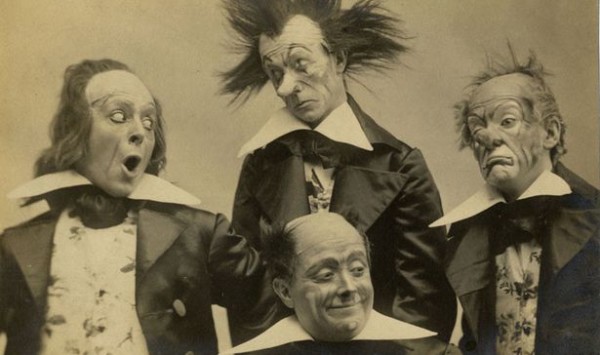
******************************************************************************************************************************* Brownstone Detectives investigates the history of our clients’ homes. The story you are about to read was composed from research conducted in the course of one of those investigations. Do you know the history of YOUR house? ******************************************************************************************************************************* Back in the early 1890s, in Stuyvesant Heights, there were clowns everywhere. Roaming and squeezing their little horns, making sad, droopy faces, and generally miming mischief. And everyone came to see them at Halsey Street and Saratoga where they paid a nickel a person to get in. Life for the clowns existed there for at least 20 years, until one day it all came to a halt. The developers had arrived and were threatening the home of the clown, threatening his very existence. BROOKLYN EXPANDS TO BUSHWICK By the mid-1890s, three blocks in the furthest reaches of the Eastern District’s Stuyvesant Heights had surprisingly remained untouched by speculative progress. While feverish land purchasing and selling had gone on all around this valuable real estate for the previous ten or so years, these dusty plots of land would continue to sit like the vestiges of the past that they were – unused farm land. Eventually, though, this land would be put to use by a bunch of clowns – the lots would begin, in 1891, to be referred to as the “circus grounds,” as traveling circuses and shows would begin annually to rent the land for their high profile extravaganzas. But the reign of the Stuyvesant Clown would be relatively short as, […]
A JUNGLE MARCHED THRU BED-STUY (1900)
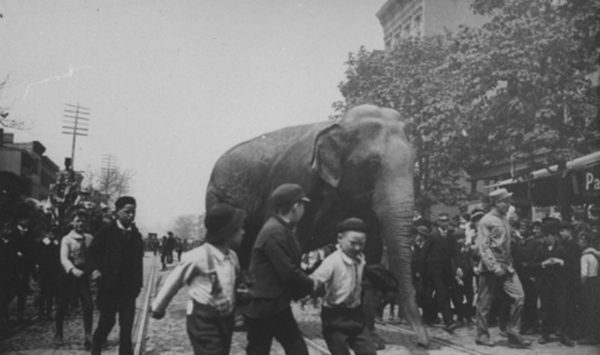
******************************************************************************************************************************** Brownstone Detectives investigates the history of our clients’ homes. The story you are about to read was composed from research conducted in the course of one of those investigations. Do you know the history of YOUR house? ******************************************************************************************************************************** The grey mastodons pounded threateningly down Howard Avenue past the gloomy darkness of Saratoga Square Park. Lumbering slowly around the corner onto Macon Street, they let forth a great trumpeting roar, swaying rhythmically to and fro. As their long, great shadows danced menacingly on the canopy of the park’s trees, cast vaguely by the faint light of the omnipresent red and green flickering colored torches, they presented a terrifying and foreign spectacle. Hundreds of small boys darted in and out of the gathering throngs to view the intimidating beasts, instilling in the air a noticeably heightened excitement which spread further and further down the block, as the presence of these creatures became known. As these majestic monsters moved towards 738 Macon Street, they let out their crushing roar which now could be felt more by the bones than by the ears. A great moan of excited joy leapt, in a synchronized response, from the lips of the visually excited crowd as each and every person lining the Macon Street parade route viewed the very first elephants. As the grey forms, dabbled in red and green light, diminished in size on their trek towards Ralph Avenue, they were replaced by the great humpbacked dromedaries with their inartful steps and studied looks of […]
THE BOY HOODLUMS OF HANCOCK STREET (1899)
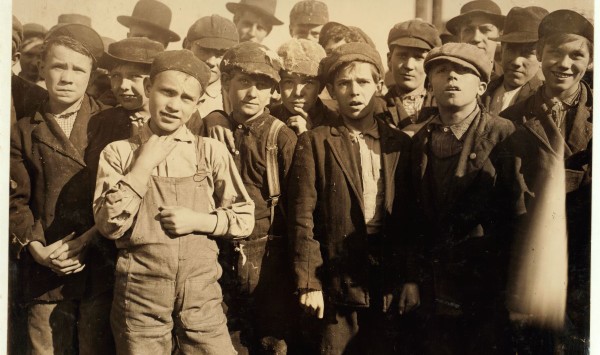
******************************************************************************************************************************** Brownstone Detectives investigates the history of our clients’ homes. The story you are about to read was composed from research conducted in the course of one of those investigations. Do you know the history of YOUR house? ******************************************************************************************************************************** If you were a boy hoodlum in “Bed-Stuy” back in 1899, then it is a good bet that you conducted your “outrages” along that stretch of Howard Avenue between Halsey and Hancock Streets. For it was there that a “small reign of terror” was “inaugurated” during this period, as small gangs of boys “armed with sticks and stones” prowled about the area with determined mal intent. A NEIGHBORHOOD COMPLAINS – THE EAGLE RAILS “The irrepressible and unregenerate young generation of boys in the vicinity of Howard avenue and Halsey street are making existence a heavy load to the law abiding population of that community,” railed the Brooklyn Daily Eagle. “The choicest lot of hoodlums in the city have banded themselves together,” the paper continued “and use that block as a fixed center, from which they conduct a campaign of well planned outrages for a radius of many blocks around.” A CASE IN POINT Two boys, in particular, were reported to the police after having assaulted a “little 10 year old boy who was going to the grocery store for his mother.” The boys, a 14-year-old member of the Earle family living at at 73 Howard Avenue and a boy named Goldstein, living at 96 Howard Avenue, “led the charge upon the […]
THE DAY RIOTERS STORMED BROOKLYN (1895)
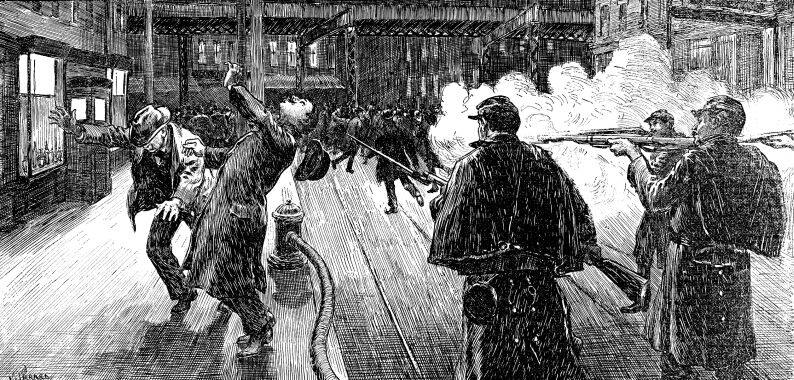
******************************************************************************************************************************** Brownstone Detectives investigates the history of our clients’ homes. The story you are about to read was composed from research conducted in the course of one of those investigations. Do you know the history of YOUR house? ******************************************************************************************************************************** (The above picture shows the New York State militia shooting a man on Halsey Street, near the corner of Broadway. You can see the recently erected elevated train line at the end of the block.) In 1895, Halsey Street near Saratoga Park had become a war zone. The Brooklyn Streetcar strike had begun on 15 January, and before the week was over the agitation would be in full force. The strike, which began with a walkout, would quickly devolve into a pitched battle between the Knights of Labor and streetcar workers on one side and the streetcar line owners, the police and the New York State Militia on the other. The main focus of much of the strikers’ attention in this part of Brooklyn, though, was the Halsey Street Rail Road Barns. These, located near the corner of Halsey Street and Broadway, were where the streetcar line stored its cars, quartered its horses, and from whence the line’s streetcars were dispatched. After the workers had called the strike, 5,500 of them would walk off the job for better conditions. The streetcar line owners (the lines were privately owned and operated at the time) countered this strike by calling in scabs who would attempt to operate the streetcars in the workers’ absence. […]
THE HERO OF THE HALSEY STREET FIRE (1911)
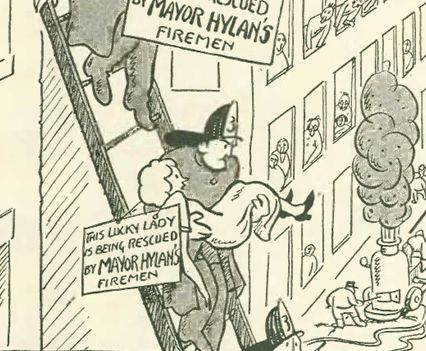
******************************************************************************************************************************** Brownstone Detectives investigates the history of our clients’ homes. The story you are about to read was composed from research conducted in the course of one of those investigations. Do you know the history of YOUR house? ******************************************************************************************************************************** Late in 1911, on a brisk early November morning, a fire broke out in the ground floor store of a 4-story corner apartment building across the street from Saratoga Square Park. It quickly spread, engulfing the entire building. Smoke pouring out of the store on the ground floor of 801 Halsey Street was first seen by a streetcar motorman, William Coffey, who, thinking quickly, began to clang his streetcar gong to arouse the sleeping inhabitants of the building. Coffey and his conductor, along with their six passengers, descended from the car and rushed to the building to do what they could do to assist in evacuating the residents. The fire had apparently started on the ground floor on the Halsey side of the building in a stationery store run by Wolf Bialik. Next door was a grocery store operated by Ernest Seemeyer. The flames then quickly “shot up the dumb waiter shaft to the roof, mushrooming out on each floor.” DETECTIVE O’HARA TO THE RESCUE Across the street, at No. 98 Howard Avenue, a 37-year-old police detective, Irving A. O’Hara, upon hearing the street car gong, had begun dressing quickly and rushed across the street to assist. By this point, the three families living in the building had made it out […]
THE FILTHY STREETS OF STUY HEIGHTS (1891)
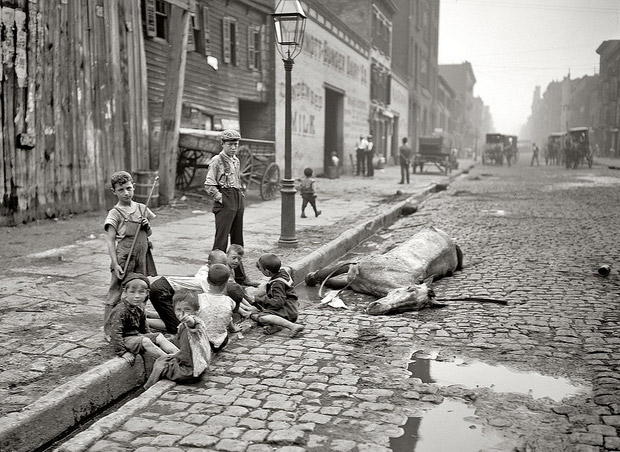
******************************************************************************************************************************** Brownstone Detectives investigates the history of our clients’ homes. The story you are about to read was composed from research conducted in the course of one of those investigations. Do you know the history of YOUR house? ******************************************************************************************************************************** “I have lived in Macon Street since Nov. 28, and there has not been a soul to clean that street during that time.” It happened then as it does now – people complain about the condition of their streets and their neighborhood, in general. The above quote was from 1891, back when Stuyvesant Heights was in the throes of a major construction expansion. Apparently, there were construction materials everywhere – filling the streets and clogging the sewers. “There are at least a thousand tons of sand and stone in the street with grass growing all over it,” the same commenter noted. “The sewer is filled up with sand.” It got so bad for this section of town – due to the relatively unregulated construction industry – that every time there was a heavy rain storm, the article continued, residents’ cellars were “flooded with one or two feet of water.” Ironically, our current 21st century Mayor’s Office declared a few years ago that the streets of Bedford-Stuyvesant were among the dirtiest in the city. Specifically, the office noted that the cleanliness of 15% of our streets was “unacceptable.” Now that Bed-Stuy is a built-up section of our city, maybe we don’t have much of an excuse for the filth. But it must […]
“GROUND TO PIECES” IN THE CUT (1914)
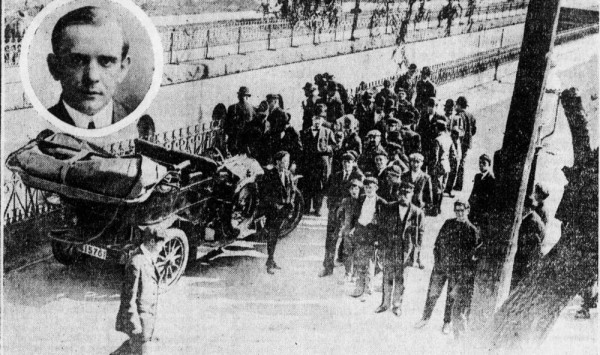
Martin Conly was the first to die by the cut in 1908. He and a boyhood “chum” were back from Coney Island at about 1 a.m. when the automobile they were traveling in ran into the low iron guard rail. Conly, the son of a prominent Brooklyn Democratic ward leader, was thrown from the vehicle and onto the tracks below. He was killed instantly. The Long Island Rail Road, which was not held accountable in court for the death, would later remove the light iron fencing and replace it with a thick concrete wall to prevent the same thing from happening again. Just a month later, though, before they could eradicate the danger – it happened again. Five young men, enjoying a “joyride” in a “large touring car,” heading north on Howard Avenue toward Atlantic Avenue, plunged into the wide trench and landed on the tracks “25 feet below,” just as a train was scheduled to pass. It was 2:10 a.m. It wasn’t until 27 December 1914, though, that an automobile would plummet into the cut while a passing train “ground to pieces” a man and his automobile. It had been traveling south on Howard Avenue towards Atlantic Avenue, when it crashed into the iron fencing. Unfortunately, the Long Island Rail Road had not found it necessary to build the same type “re-enforced” concrete wall on the north side of the cut (as it had on the south). MITIGATING THE CUT Today, the mitigation is noticeable – but just barely. […]
SURVIVING THE ATLANTIC AVENUE “CUT” (1920)
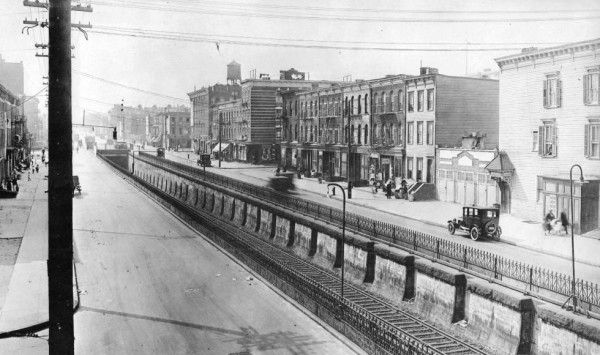
O! What a difference 90 years makes. The Long Island Rail Road (L.I.R.R.) “Cut,” which divided the eastward and westward sides of Atlantic Avenue, was a much more scenic feature back in the day. In this photograph taken looking eastward from Howard Avenue, a small family walks with a baby carriage at the lower right, and a woman, above them, looks out of the window. Shoppers along with residents of the houses fill the sidewalks, as they run errands, talk with one another, and take in the streets scenes, themselves. These scenes were representative of the entire stretch of the avenue of the time. As the automobile came into prominence, though, and repair shops and filling stations began congregating along the avenue, the people began to disappear, along with their residential buildings, the latter of which were really not that old at the time. Sadly, none of these buildings appear to be standing today. Notice the number of ornate Victorian-era wood-frame houses that were in existence then. Also, notice the cast-iron fencing that the L.I.R.R. used to keep pedestrians from falling – and drivers from plunging – down into the “cut.” Unfortunately, for a number of motorists driving in the direction of the tracks, this fencing was of little help. With the low height of the old cast iron fence that lined the “cut,” many night-time drivers had a difficult time realizing – as they perpendicularly approached the “cut” in the dark – that there was actually no path between […]
THE GENTRIFICATION OF SARATOGA PARK (1896)
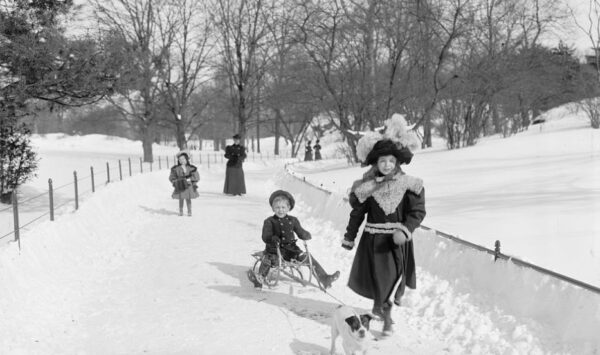
******************************************************************************************************************************** Brownstone Detectives investigates the history of our clients’ homes. The story you are about to read was composed from research conducted in the course of one of those investigations. Do you know the history of YOUR house? ******************************************************************************************************************************** Around the mid-1890s, the public in the Eastern District of Brooklyn – in what would come to be known as the Stuyvesant Heights section of Bedford-Stuyvesant – began clamoring for a space for a local park. There were three things driving this support: 1) the extension of the Brooklyn street grid system, along with 2) failing attempts by local governments in keeping pace with the growing population in the 25th Ward, and partly due to 3) the success and popularity of Central Park in Manhattan and Prospect Park in Brooklyn. As a result, the City’s aldermen, sensing the growing aspiration for “breathing space” in the locality, went looking around for an adequate stretch of land to acquire for a park – something that would suit the local residents. After a thorough exploration within the ward, the City’s elders settled upon a square little more than 3 acres in size, bounded by Halsey and Macon streets, and Howard and Saratoga avenues. Other than the fact that it was in a very desirable location, it was really the only choice they had – it was the single available piece of undeveloped land in the district of its size. O! And then there was the price… JAMES CLINTON BROWER ENTERS THE SCENE This singular […]